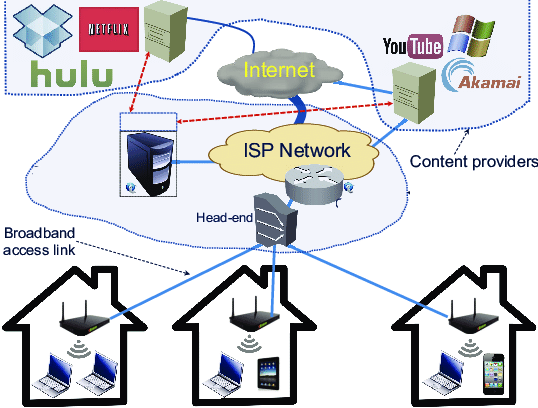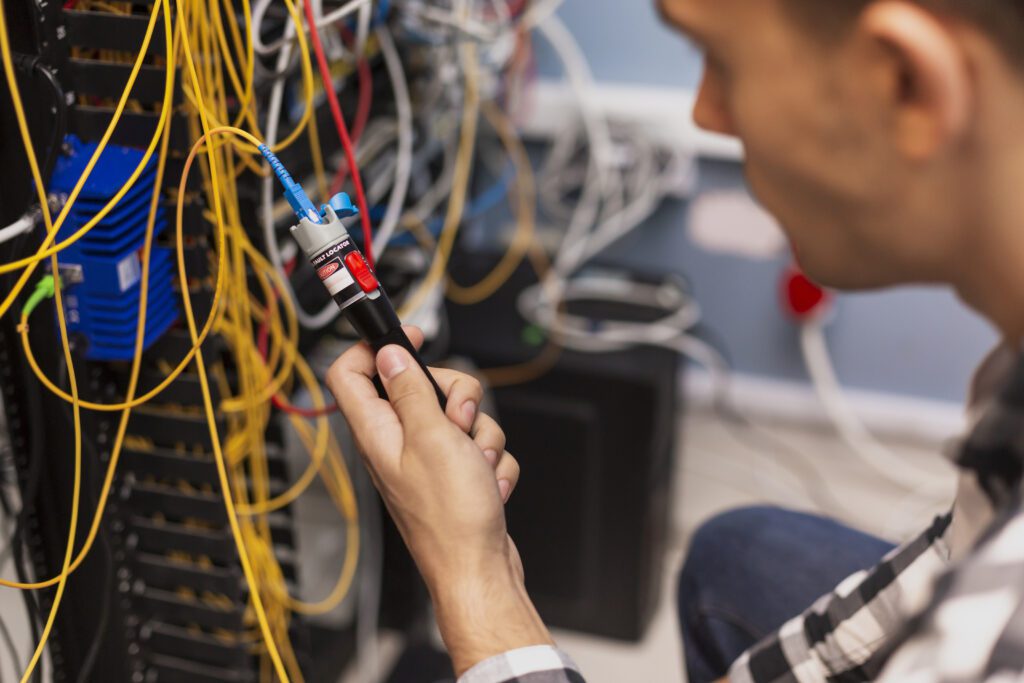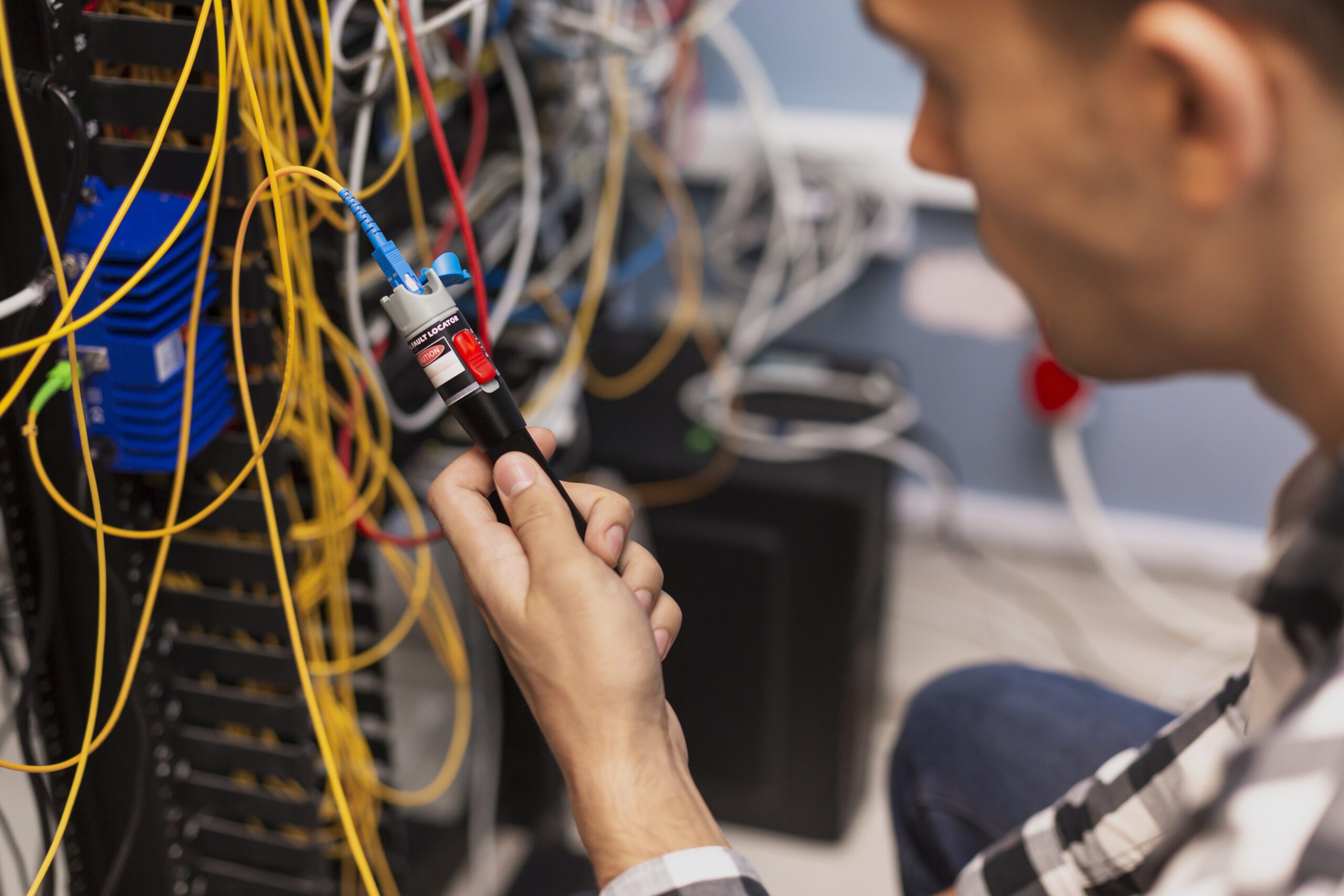

Introduction:
In the digital age, high-speed internet is no longer a luxury but a necessity. Fiber to the Home (FTTH) technology is at the forefront of providing ultra-fast, reliable internet connectivity directly to residences. This comprehensive guide delves into the intricacies of FTTH installation, offering insights and tips to ensure a seamless transition to fiber-optic internet. It’s tailored for homeowners, property developers, and internet service providers (ISPs) who are keen on understanding and leveraging the benefits of FTTH.
What is FTTH? Fiber to the Home (FTTH) refers to the installation and use of fiber-optic cables directly to individual buildings such as residences, apartment buildings, and businesses, providing high-speed internet access. Unlike traditional copper lines, fiber-optic cables transmit data at the speed of light, offering significantly higher speeds and more reliable connections.
Benefits of FTTH Installation:
- Unmatched Internet Speed: FTTH provides exceptionally high-speed internet, ideal for streaming, gaming, and downloading large files.
- Reliability: Fiber-optic cables are less susceptible to interference and signal degradation over long distances compared to copper cables.
- Future-Proofing: As digital demands continue to grow, FTTH is scalable to meet future technological advancements and increased data needs.
- Increased Property Value: Homes with FTTH have been shown to have a higher market value.
The FTTH Installation Process:
- Initial Planning: This involves a site survey by the ISP to determine the best route for the fiber-optic cable.
- Laying the Fiber Cables: Cables may be laid underground or aerially, depending on the location and infrastructure.
- In-House Installation: Technicians install the necessary equipment inside the home, such as the optical network terminal (ONT).
- Testing and Activation: After installation, the system is tested to ensure optimal performance.
Choosing the Right ISP for FTTH: When selecting an ISP for FTTH installation, consider:
- Coverage Area: Ensure the ISP services your area.
- Bandwidth Options: Look for ISPs offering various speed tiers to suit your needs.
- Customer Support: Good customer service is crucial for troubleshooting and maintenance.
- Cost: Compare pricing plans and installation fees.


Preparing Your Home for FTTH Installation:
- Determine the Optimal Router Location: For the best Wi-Fi coverage, choose a central location in your home.
- Ensure Easy Access to Installation Points: Clear the area where the ONT and router will be installed.
- Understand the Installation Process: Ask your ISP about the installation timeline and what to expect.
Maintenance and Troubleshooting:


Regular maintenance of your FTTH connection ensures long-term reliability and performance. Here are some tips for maintaining and troubleshooting your FTTH setup:
- Regular Check-ups: Schedule periodic inspections with your ISP to ensure the fiber-optic cables and hardware are functioning optimally.
- Software Updates: Keep your router’s firmware updated to enhance security and performance.
- Monitor Performance: Regularly test your internet speed to ensure you’re getting the bandwidth you’re paying for.
- Troubleshooting Common Issues: If you experience a loss in connectivity, check for any visible damage to the cables, reboot your router, and contact your ISP if the problem persists.
Future Trends in FTTH Technology:


FTTH technology is continuously evolving, with new advancements promising even greater speeds and more reliable connections. Future trends include:
- Higher Bandwidth Capacities: Technological improvements will allow for even higher data transmission rates.
- Integration with Smart Home Technologies: FTTH will become more integrated with IoT devices, enhancing smart home functionalities.
- Enhanced Security Features: As reliance on high-speed internet increases, so will the need for advanced cybersecurity measures within the FTTH networks.
Conclusion:
FTTH installation is a smart investment for anyone seeking high-speed, reliable internet service. By understanding the installation process, choosing the right ISP, and knowing how to maintain your connection, you can maximize the benefits of FTTH technology. As the digital landscape evolves, FTTH will continue to play a crucial role in connecting us to the world with unparalleled speed and efficiency.


